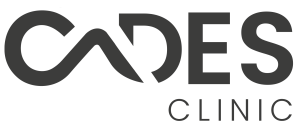Introduction
Hormones are the silent conductors of our physiological orchestra, orchestrating a symphony of bodily functions. Among these hormones, testosterone and estrogen stand as two of the most influential, each with distinct roles in the male and female bodies. In this article, we delve into the world of testosterone and estrogen, exploring their functions, why there are differences in levels between genders, and what happens when these hormonal balances are disrupted.

What is the role of Testosterone and Estrogen?
- Testosterone: Often associated with masculinity, testosterone is the primary male sex hormone. It plays a crucial role in the development of male reproductive tissues, including the testes and prostate, as well as the growth of facial and body hair. It also contributes to muscle and bone strength.
- Estrogen: Estrogen, on the other hand, is predominantly thought of as a female hormone. It’s responsible for the development of female secondary sexual characteristics, such as breast development and regulation of the menstrual cycle. It also supports healthy bone density.
How much Testosterone and Estrogen should I have?
-
- Male Hormonal Balance: In males, testosterone is the dominant hormone, and the body typically produces larger quantities of it. This hormonal balance is responsible for male physical characteristics, deepening of the voice during puberty, and the development of muscle mass.
- Female Hormonal Balance: Estrogen is the primary female sex hormone, and it plays a central role in regulating the menstrual cycle, promoting breast development, and maintaining bone density. Women also produce small amounts of testosterone, contributing to muscle tone and overall health.

What can happen if Testosterone and Estrogen are imbalanced?
- Excess Testosterone in Men: Excessive testosterone levels in men can lead to aggressive behavior, acne, and an increased risk of cardiovascular problems. It can also result in the development of male pattern baldness.
- Excess Estrogen in Men: Elevated estrogen levels in men can lead to unwanted changes, such as the development of breast tissue (gynecomastia), reduced libido, and fertility issues.
- Excess Estrogen in Women: High estrogen levels in women can cause irregular menstrual cycles, mood swings, and in some cases, an increased risk of certain types of cancer, including breast cancer.
- Excess Testosterone in Women: Elevated testosterone levels in women can result in conditions like polycystic ovary syndrome (PCOS), which can lead to irregular periods, hirsutism (excessive hair growth), and acne.
Hormonal Balance and Health
Balancing hormones is essential for overall health and well-being. When hormones are within the appropriate range, they ensure that our bodies function optimally. Any significant imbalances should be addressed with the help of a healthcare professional, as hormonal disorders can lead to a wide range of health issues.
Conclusion
Testosterone and estrogen, the primary male and female sex hormones, play pivotal roles in defining the physical and physiological characteristics of each gender. The fine balance between these hormones ensures proper development and overall health. Understanding the differences in hormonal levels and the potential consequences of hormonal imbalances is crucial for maintaining a healthy, thriving body. Seeking medical guidance when dealing with hormonal issues is paramount to achieving and maintaining an optimal state of well-being. Hormones are, indeed, a delicate symphony, and when in tune, they harmonize our lives.
Disclaimer: The content on this blog is intended for general informational purposes only. It is not a substitute for professional medical advice, diagnosis, or treatment. Always consult qualified healthcare providers for personalized advice. Information regarding plastic surgery, dental treatment, hair transplant, and other medical procedures is educational and not a guarantee of results. We do not assume liability for actions taken based on blog content. Medical knowledge evolves; verify information and consult professionals. External links do not imply endorsement. By using this blog, you agree to these terms.





